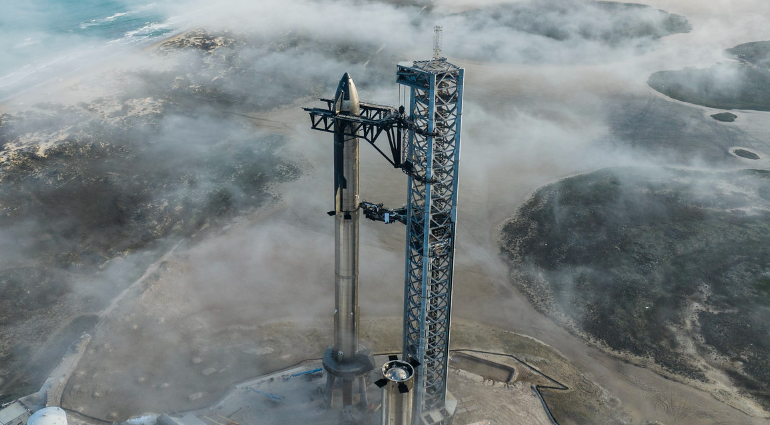
Starship full stack.
SpaceX will attempt to test-fire the 33 Raptor engines of its first Starship/Super Heavy booster on Feb. 9, bringing the company a step closer to an orbital flight test.
“Tomorrow is a big day for SpaceX,” President Gwynne Shotwell said at the FAA Commercial Space Transportation conference underway in Washington this week. “We are going to attempt a 33-engine static fire for Starship. It’s really the final ground test that we can do before ... the first flight test. That’s going to be really exciting,” Shotwell said.
“Keep in mind this first one is really a test flight,” Shotwell later told reporters on the conference sidelines. “We can’t do stage-sep [separation] testing here, can’t separate the ship from the booster until we lift off. So this is truly a flight test. And the real goal is to not blow up the launchpad. That is success.”
Starship is a two-stage, Mars-class transport system in development at SpaceX’s privately owned production and launch complex in Boca Chica, Texas. With more than twice the thrust of NASA’s Saturn V and the Space Launch System Moon rockets, Starship/Super Heavy is poised to become the most powerful launch system ever built.
SpaceX-designed and manufactured Raptor engines, fueled by liquid oxygen and liquid methane, power both the Starship upper stage and the Super Heavy booster. Both stages are designed to be reused.
SpaceX completed a full wet dress rehearsal on Jan. 24, fueling the Starship and Super Heavy booster with more than 10 million lb. of liquid oxygen and liquid methane.
NASA has purchased Starship flight services to transport astronauts to and from lunar orbit and the Moon’s surface.
“To make that real, we’ve got to get orbital really quickly here,” Shotwell told reporters. “We need to get a lot of time on that machine. We don’t want the 15th flight to be carrying people. We want [it to be] the 100th flight or the 200th flight. At the cadence that we’re thinking about … we should be able to have hundreds of flights before we fly humans. That’s the goal.
“We’ve designed Starship to be producible and launch quickly,” Shotwell added. “So if we can do 100 flights of Falcon this year, I’d love to be able to do 100 flights of Starship next year. I don’t think we will do 100 flights of Starship next year, but maybe in 2025 we will.”

Comments